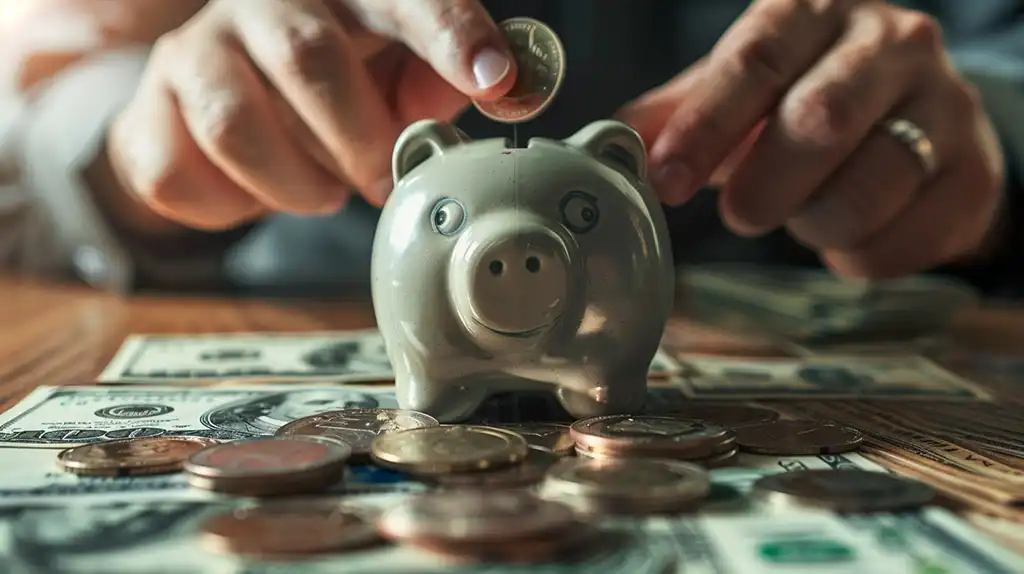01 September 2024
When it comes to managing your finances, few things are as critical as having an emergency fund. You might have heard financial experts and gurus constantly talking about it, and for good reason—an emergency fund is the safety net that can protect you from life’s unexpected twists and turns. Whether it’s a sudden car repair, an unexpected medical bill, or even a job loss, having a cushion of cash can make the difference between a minor inconvenience and a financial disaster. But why $1,000, and why is it so important to have this amount set aside right now? Let’s dive into the details.Why $1,000?
You might be wondering, "Why is $1,000 the magic number for an emergency fund?" It’s simple: $1,000 is a realistic, achievable amount that can cover most of life’s smaller, yet significant, financial surprises. While it won’t cover every possible emergency, it’s a solid starting point that can keep you from going into debt when the unexpected happens.

Think of it this way: $1,000 can cover an unexpected car repair, a visit to the emergency room, or a last-minute trip home for a family emergency. These are the kinds of expenses that often catch us off guard, leading to stress and financial strain. Having $1,000 set aside gives you the confidence to handle these situations without relying on credit cards or loans, which can add to your financial burdens.
The Importance of Starting Small
You might feel overwhelmed by the idea of saving $1,000, especially if you’re living paycheck to paycheck. But here’s the thing: building an emergency fund doesn’t have to be a daunting task. It’s about starting small and gradually working your way up.
Imagine you’re climbing a mountain. The peak might seem impossibly far away, but you don’t reach the top in one giant leap—you get there step by step. The same goes for your emergency fund. Start by setting aside a small amount each week or month. Even $10 a week adds up to $520 in a year. By breaking it down into manageable steps, you’ll reach your $1,000 goal before you know it.
The key is to make saving a habit. Once you see your emergency fund grow, you’ll be motivated to keep going. And as you develop this habit, you’ll find it easier to save even more in the future.
Why You Need an Emergency Fund Now
We live in uncertain times. The economy can be unpredictable, jobs aren’t always secure, and unexpected expenses can pop up out of nowhere. Without an emergency fund, you’re leaving yourself vulnerable to financial setbacks that could derail your progress and push you into debt.
Consider this: What would you do if your car suddenly broke down and you needed $800 to fix it? Or if you had to make a surprise visit to the dentist that costs $600? Without an emergency fund, you might be forced to put those expenses on a credit card, taking on high-interest debt that can be difficult to pay off.
An emergency fund is your first line of defense against these kinds of situations. It provides a buffer that allows you to handle emergencies without derailing your financial plans. By having $1,000 set aside, you’re buying yourself peace of mind. You know that if something unexpected happens, you’re prepared.
How to Build Your $1,000 Emergency Fund
Now that you understand the importance of having a $1,000 emergency fund, let’s talk about how to build it. It might seem challenging, especially if your budget is tight, but with a little creativity and discipline, you can get there.
1. Set a Clear Goal
The first step in building your emergency fund is setting a clear, specific goal. Knowing exactly how much you need to save and by when will give you the motivation to stick to your plan. Write down your goal and keep it somewhere visible—on your fridge, in your wallet, or as a note on your phone. This constant reminder will keep you focused and committed.
2. Analyze Your Spending
Take a close look at your current spending habits. Are there areas where you can cut back, even just temporarily? For example, could you skip your daily coffee run and brew at home instead? Could you cut down on eating out and cook more meals at home? Small changes like these can free up extra cash that you can funnel into your emergency fund.
3. Automate Your Savings
One of the easiest ways to build your emergency fund is to automate your savings. Set up an automatic transfer from your checking account to your savings account each payday. This way, you’re paying yourself first and making saving a priority. Even if it’s just a small amount, consistency is key. Over time, those small deposits will add up to your $1,000 goal.
4. Sell Unused Items
Look around your home—do you have items you no longer need or use? Selling unused or unwanted items online or at a garage sale can be a quick and easy way to boost your emergency fund. Not only will you declutter your space, but you’ll also make extra cash that can go directly into your savings.
5. Take on a Side Hustle
If you’re serious about building your emergency fund quickly, consider taking on a side hustle. Whether it’s freelancing, driving for a ride-sharing service, or offering services in your community, a side hustle can help you earn extra money that you can save. Even a few hours a week can make a significant difference in reaching your goal.
6. Save Windfalls
Whenever you receive unexpected money—like a tax refund, a work bonus, or even a birthday gift—resist the temptation to spend it. Instead, put it directly into your emergency fund. Windfalls are a great way to give your savings a quick boost.
7. Track Your Progress
Finally, track your progress as you build your emergency fund. Seeing your savings grow, even by small amounts, can be incredibly motivating. Celebrate your milestones along the way—whether it’s reaching your first $100 or your full $1,000. Each step brings you closer to financial security.
The Psychological Benefits of an Emergency Fund
Building an emergency fund isn’t just about the financial benefits—it’s also about peace of mind. Knowing that you have a financial cushion in place can reduce stress and anxiety, making it easier to focus on other aspects of your life.
Imagine going to bed at night knowing that, no matter what tomorrow brings, you’re prepared. That sense of security is priceless. It allows you to take risks, pursue opportunities, and live your life without constantly worrying about what might go wrong.
An emergency fund also gives you more control over your finances. Instead of reacting to financial surprises with panic or fear, you can approach them with confidence. You’ll be able to handle unexpected expenses without derailing your financial plans, which can help you stay on track toward your larger financial goals.
Common Misconceptions About Emergency Funds
Despite the importance of having an emergency fund, there are some common misconceptions that can prevent people from building one. Let’s debunk a few of these myths:
- "I don’t make enough money to save." It’s a common belief that you need a high income to build an emergency fund, but that’s simply not true. The key is to start small and save consistently. Even if you’re only able to save a few dollars a week, it’s better than nothing. Over time, those small contributions will add up.
- "I have credit cards, so I don’t need an emergency fund." While credit cards can be a useful tool in an emergency, they shouldn’t be your first line of defense. Relying on credit can lead to debt, which can be difficult to pay off, especially if you’re dealing with high-interest rates. An emergency fund allows you to handle unexpected expenses without going into debt.
- "I’ll start saving later." Procrastination is one of the biggest obstacles to building an emergency fund. It’s easy to put off saving, especially when you’re focused on paying bills or managing other financial responsibilities. But the truth is, the best time to start saving is now. The sooner you start, the sooner you’ll reach your goal.
What to Do After Reaching Your $1,000 Goal
Once you’ve reached your $1,000 emergency fund goal, you might be tempted to stop there. But while $1,000 is a great start, it’s just that—a start. Ideally, you’ll want to continue building your emergency fund until you have three to six months’ worth of living expenses saved. This larger cushion will provide even more security and protect you from bigger financial challenges, such as job loss or major medical expenses.
As you continue to save, consider opening a high-yield savings account to maximize your interest earnings. This way, your money will grow over time, giving you even more financial stability.
Conclusion: Take Control of Your Financial Future
The $1,000 emergency fund is more than just a financial safety net—it’s a foundation for a secure and stable financial future. By taking the steps to build your emergency fund now, you’re setting yourself up for success, no matter what life throws your way.
Remember, the journey to financial security starts with small steps. Whether you’re saving a little each week, selling unused items, or taking on a side hustle, every bit counts. The most important thing is to start now. Don’t wait for the perfect time or the perfect amount. Start with what you have, and before you know it, you’ll have the peace of mind that comes with knowing you’re prepared.
So, are you ready to take control of your finances and build your $1,000 emergency fund? The time to start is now. Your future self will
thank you.


